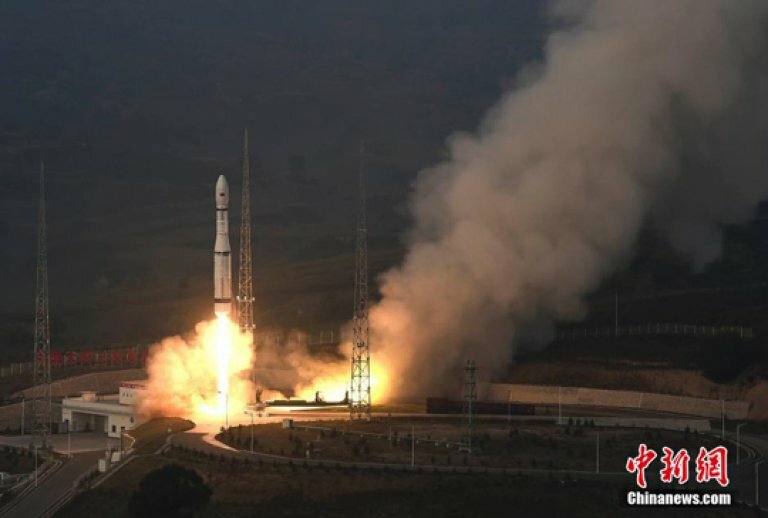China on Sunday launched a new, smaller type of rocket from its “Long March” family, which will be primarily used for carrying satellites aloft, state media reported, as the country races ahead with an ambitious space program.
China successfully launched the first Long March 6 carrier rocket on Sunday morning, the first of a new generation of rocket families created to boost the country’s space capabilities, including constructing a space station and future lunar missions.
Designed by the China Aerospace Science and Technology Corporation, developer of the Shenzhou VII spacecraft, the CZ-6 is a non-toxic and pollution-free rocket which features a number of next-generation technologies, including a liquid oxygen kerosene engine.
State media were glowing in their praise for the new rocket.
Zhang Weidong, designer-in-chief at the Shanghai Academy of Spaceflight Technology with the China Aerospace Science and Technology Corporation, said the new rocket also “reformed the way carrier rockets are tested and launched in China”. “The new model will also significantly improve our ability to access space”, Zhang said.
The rocket is 29.3m high, shorter than others actively used in China’s space programme, reports said.
With Chinese authorities and media remaining quiet, online posts from those involved with amateur radio satellites offered the first indications that the launch was successful. It will apply China’s largest solid-fuel rocket engine and was designed to meet the need to rapidly launch satellites in case of emergencies or disasters.
China’s space programme, which has potential military applications, is shrouded in secrecy.
On September 25, the country is expected to launch another rocket, the Long March 11 carrier rocket (CZ-11) in Jiuquan, in northwest China’s Gansu Province, to carry three satellites with it.
“The separation control for 20 satellites required high accuracy, precision and reliability”, Hao Yaofeng, a technician at the Taiyuan Satellite Launch Center, told CCTV.
The Long March-5 will use a non-toxic and pollution-free propellant, and will be capable of placing a 25-tonne payload into near-Earth orbit, or placing a 14-tonne payload into geostationary orbit.
“Loading, testing and positioning were finished when the Long March-6 rocket was at a horizontal position, before it was lifted to an upright position for launching”.
